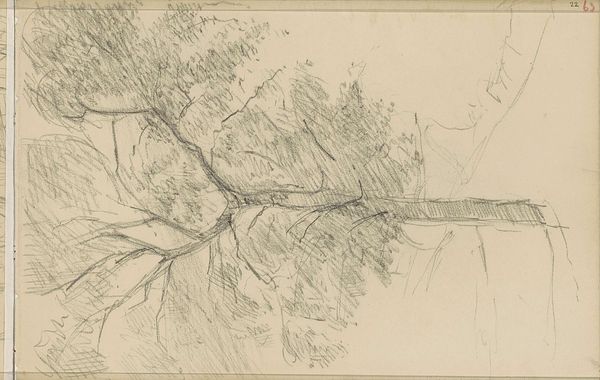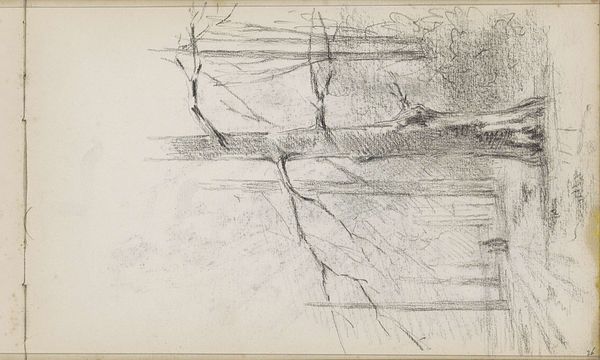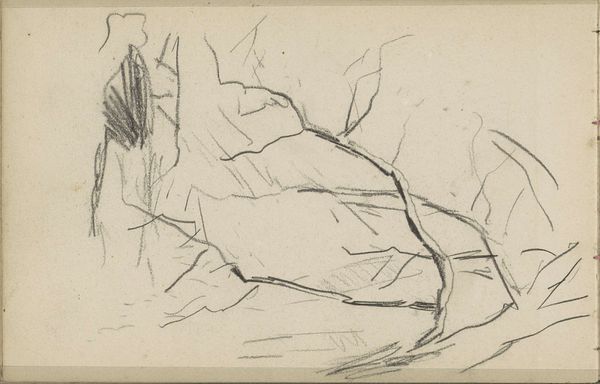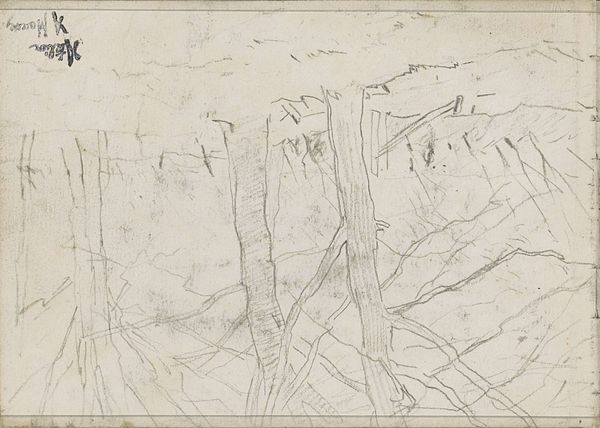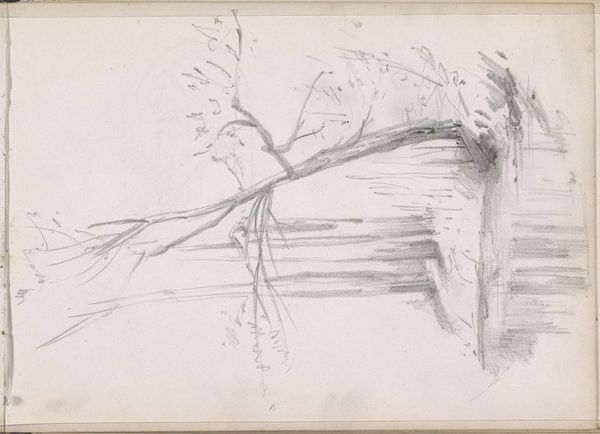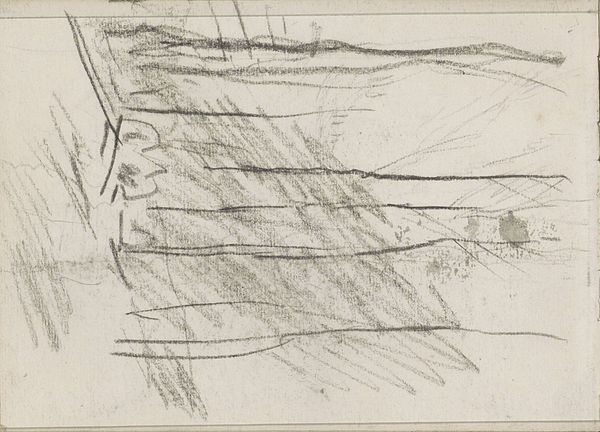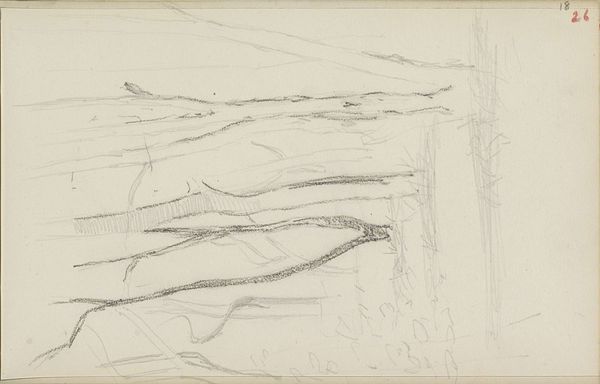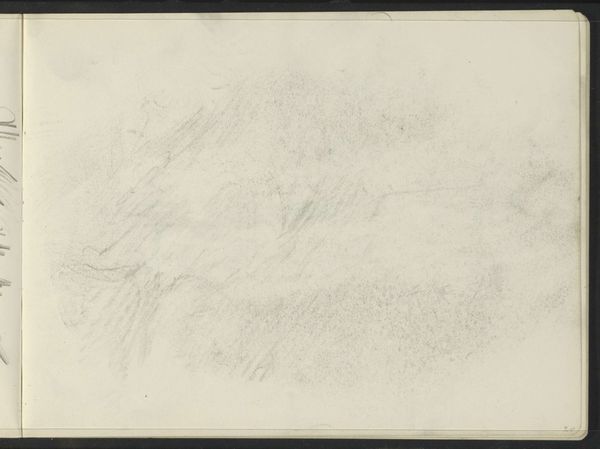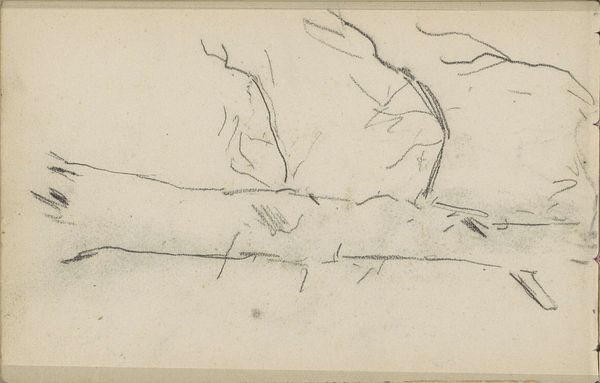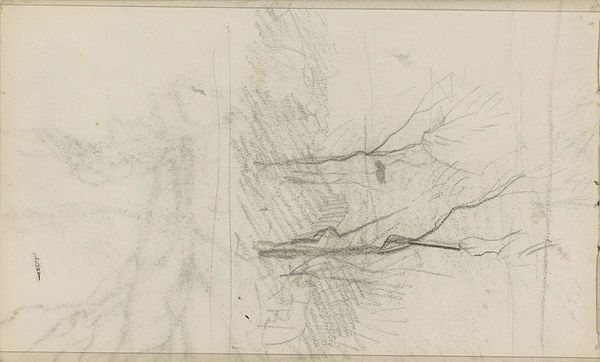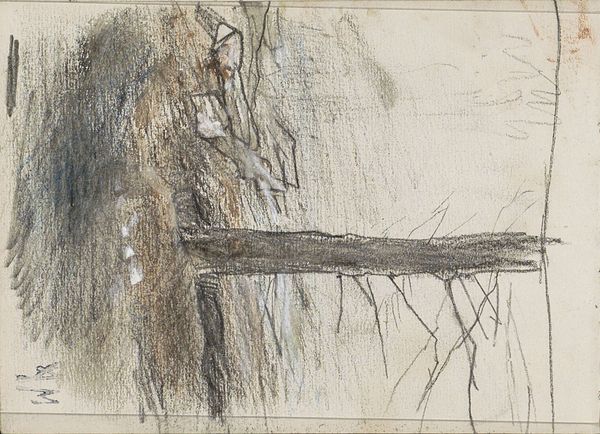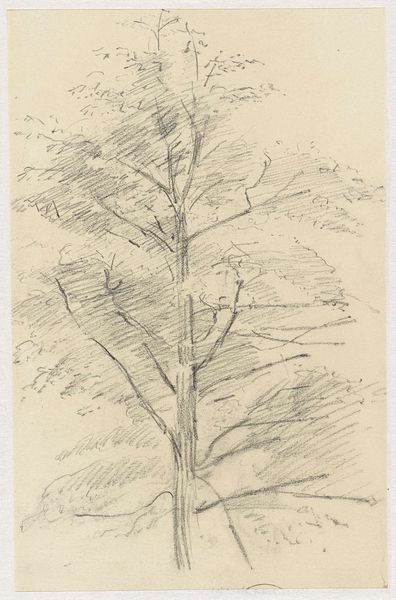
drawing, paper, pencil
#
drawing
#
impressionism
#
pencil sketch
#
landscape
#
paper
#
forest
#
pencil
Dimensions: height 158 mm, width 247 mm
Copyright: Rijks Museum: Open Domain
Curator: Willem Cornelis Rip’s “Trees in a Forest in The Hague,” created around 1876-77, presents an intriguing exploration of landscape through a humble medium: pencil on paper. Editor: My first impression is one of sparseness, almost fragility. The lines are so delicate, conveying a sense of the transient nature of the scene, the impermanence of the forest itself. Curator: Absolutely. We might consider the Impressionist leanings evident in Rip’s work. This wasn’t simply about capturing the trees; it was about rendering light and atmosphere and how these elements affect our perception of the natural world. It acknowledges a relationship between the natural world and human subjectivity in experiencing these surroundings. Editor: The structural composition is equally compelling. Notice how the branches crisscross, creating layers and depth. This overlapping is what grants the two-dimensionality a spatial complexity, urging the viewer to traverse the scene from the foreground to background. There are diagonals upon diagonals. Curator: I agree, the diagonals offer dynamism. The very act of depicting a local forest, especially one near The Hague, points to an increasing awareness and appreciation of natural landscapes in art and culture at the time, intertwined with rising ecological consciousness. It signifies belonging. Editor: Perhaps, but from a formalist perspective, consider the pure abstraction nascent in these strokes. The almost calligraphic quality, those lines evoking volume and space with utmost efficiency...It's reductionism revealing form. Curator: Reduction, but also representation of reality. This period in Dutch art also reflects discussions around national identity—a nation that has deep cultural and economic connections to its immediate landscape, which appears throughout Dutch paintings and drawings. I'd suggest it highlights the quiet, resilient nature so often claimed by the Dutch. Editor: So you feel it evokes Dutchness? Perhaps, if we bring it all together: It appears we're looking at a microcosm. Curator: Indeed, the forest holds up a mirror, of identity, politics, and land. Thanks for illuminating the structural beauty present in Rip’s artwork. Editor: Thanks to your perspectives about the art within history. A valuable dialogue, wouldn't you say?
Comments
No comments
Be the first to comment and join the conversation on the ultimate creative platform.
